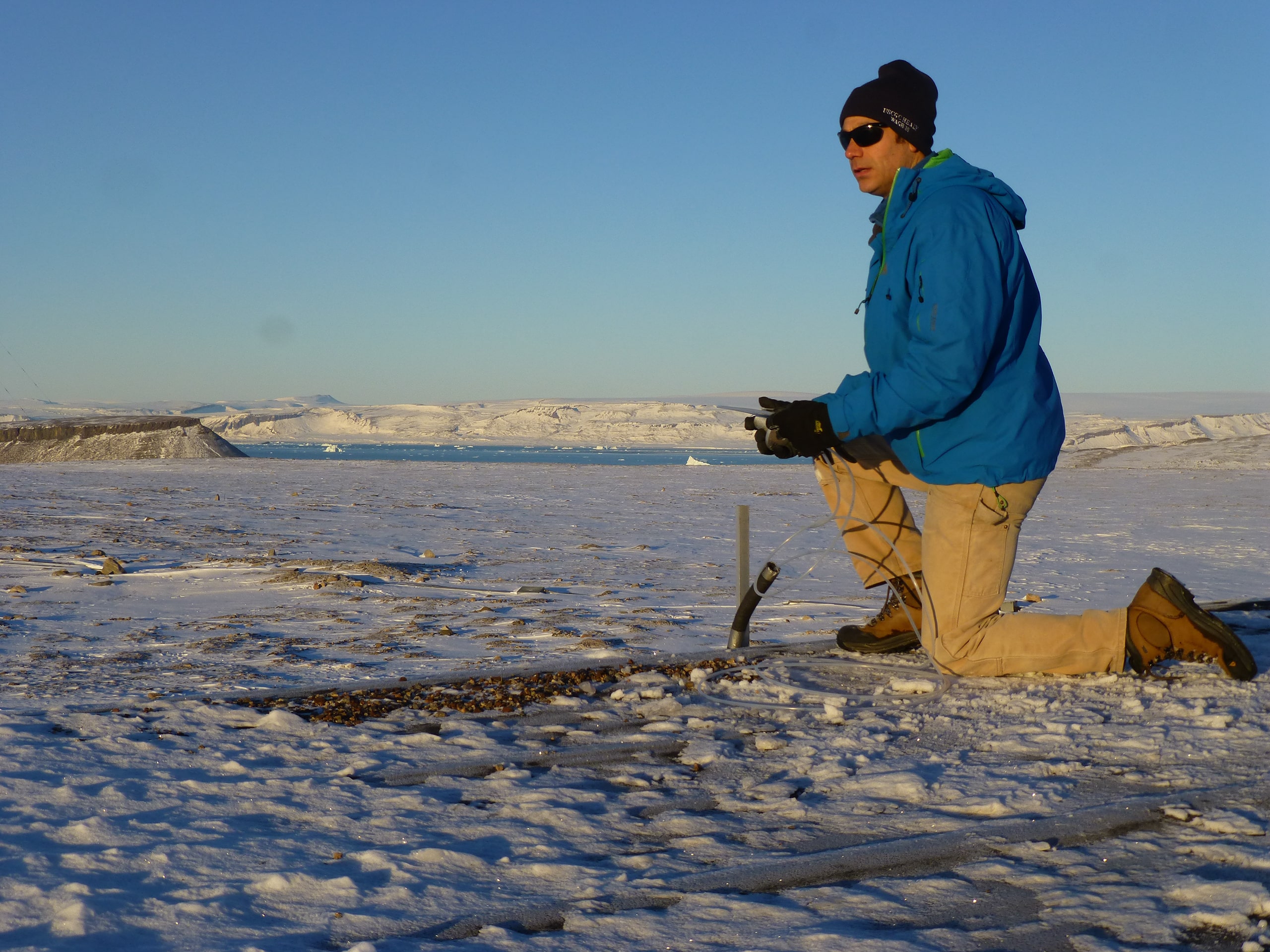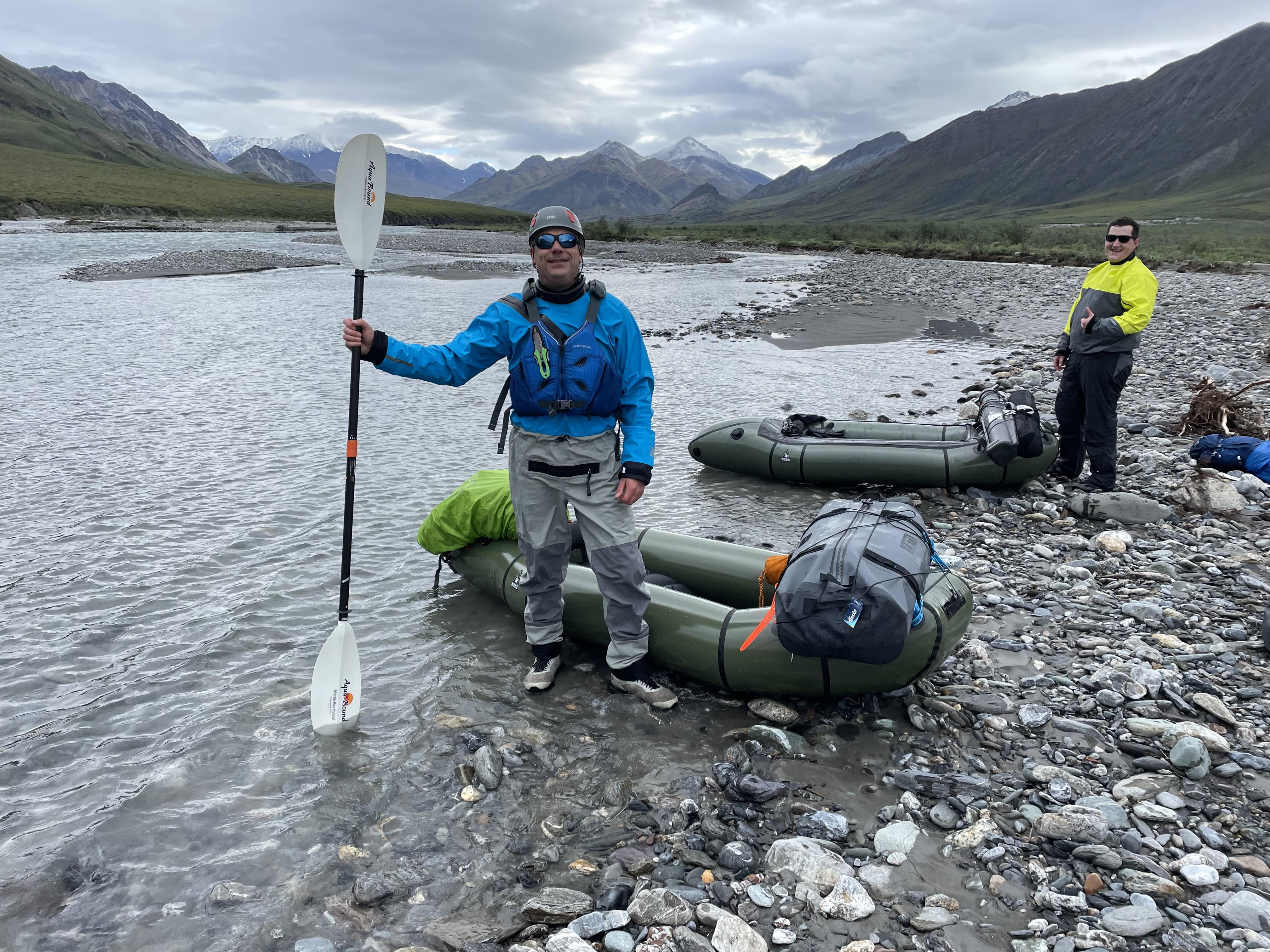Faculty Spotlight: Eric Klein

Dr. Eric Klein is an Assistant Professor in the Department of Geological Sciences where he teaches courses in hydrogeology, paleoclimatology, and the cryosphere. Dr. Klein received his Bachelor of Arts in Political Science in 2000 from the University of Puget Sound. Following that, Dr. Klein pursued his Master of Science in Environmental Science at Alaska Pacific University and his PhD in Earth and Environmental Sciences at Lehigh University. Dr. Klein’s current research incorporates both modern and paleo techniques to understand how water moves through Earth systems and how these patterns change with time. Much of Dr. Klein’s current research is in high northern latitude and Arctic environments, and involves field work in Alaska, Greenland, and parts of Northern Europe.
Dr. Klein was recently awarded a National Science Foundation (NSF) CAREER award for his project entitled “Follow the Water: Understanding River Discharge Dynamics in Rapidly Changing High Northern Latitudes.” NSF CAREER awards are highly competitive grants awarded to “early-career faculty who have the potential to serve as academic role models in research and education.”
Dr. Eric Klein sat down with us to discuss his research, the NSF CAREER award, and teaching at UAA.
Can you share a little about the award and the research you will conduct with that funding?
“The NSF CAREER Award is awarded to non-tenured faculty who have shown excellence in teaching and research. I'm very appreciative and proud of being awarded one of these grants, as it is one of NSFs more highly competitive awards and involves an important education component. One of the hallmarks of the NSF CAREER Awards is the integration between research and education. With that, there is an expectation to bring those two ideas together, and consider how the research drives education and how education in turn influences the research.
The focus of the research for my NSF CAREER Award will look at how changes in the Arctic cryosphere (the frozen water on Earth, like glaciers) are influencing changes in river water. Specifically, I will be looking at northern Greenland, which is covered mostly by a rapidly retreating ice sheet and glaciers. The Greenland Ice Sheet and its nearby glaciers are melting, producing meltwater, which fuels rivers. Additionally, we have to consider the permafrost and how it is thawing. One of the main ideas of my research is to see how these two components of the cryosphere (changes in permafrost and changes in glacial melt) are impacting the amount of water in rivers.
We will be studying the source of river water (such as melting glaciers or flow through thawed permafrost) and also the composition of the water: things like nutrients, carbon, metals. This will help to create models to better understand what a future Arctic river and freshwater cycle looks like if there are fewer glaciers and continued melting of the Greenland Ice Sheet melts.
Another interesting aspect of this project is wokring with people that live in the Arctic. Historically, for thousands of years, people have lived in the Arctic. Which is why another component of the project will bring together indigenous students from Alaska and Greenland to help us learn more about the changing Arctic and how people living in these two different Arctic areas are experiencing these changes.

What other research projects have you been involved with recently?
“I have been involved in several different projects, most of which involve changes in the Arctic and changes in water. I was on an icebreaker trip that went through the Northwest passage from Alaska to Greenland. We were studying changes in sea ice, freshwater inputs, and how they might impact precipitation. Ultimately, the goal was to try to understand the movement of water through a rapidly changing and wetter Arctic.
I have also had some other research projects looking at changes in Arctic sea ice and the movement of water through the cryosphere. One in particular was an international project with the Polarstern German icebreaker. It was a polar drift study, where the ship moved with the sea ice throughout the winter. Another project was based in Northern Alaska at Toolik Field Station, where we focused on hydroclimatology, in this case studying where water was coming from and how it was influenced by changes in sea ice and storms."
Do you work with a lot of UAA students, both undergraduate and graduate students?
“Yes, in every one of my projects, I work with both undergraduate and graduate students. I have undergraduate students that help out in the lab. Sometimes the undergraduate students have the opportunity to go out in the field with me. For my projects, I also work with graduate students, and will continue to do so. The graduate students that help me work in the field for their degrees, also assist with work in the lab. The NSF CAREER Award includes funding for students to work with me on the project. Another part of the NSF CAREER award will allow me to create a new Arctic Hydrology course (in conjunction with the University of the Arctic) that incorporates material directly from the research part of the project.”

On that same thread, how does the research and working with students impact your role in the classroom?
“There is a clear connection between the research that I conduct and my role as a professor. I love research - it is one of the things that really drives me and keeps me excited. One of the best aspects of all this is bringing students into the investigation of the questions that research presents. It is exciting to see them grow and learn. Students are an integral part of my research program. I enjoy helping them understand the importance of research and I always learn a lot from them as well. I’ve had many great teachers and mentors help me reach this point and I hope to help other students in a similar way.
The research forces you to stay engaged with what's going on and know what people are doing. But the education side makes it practical. Bringing the research into the classroom provides some connection to the ideas that we're talking about, making it so that it is not just in the textbook. I get to be engaged with the latest research, but for me the key is how these ideas can be incorporated into my class. I get to use real-world examples of things that I'm working on, which I think enhances the students’ learning experience.
Congratulations on the NSF CAREER Award, Dr. Klein, and keep up the good work!









